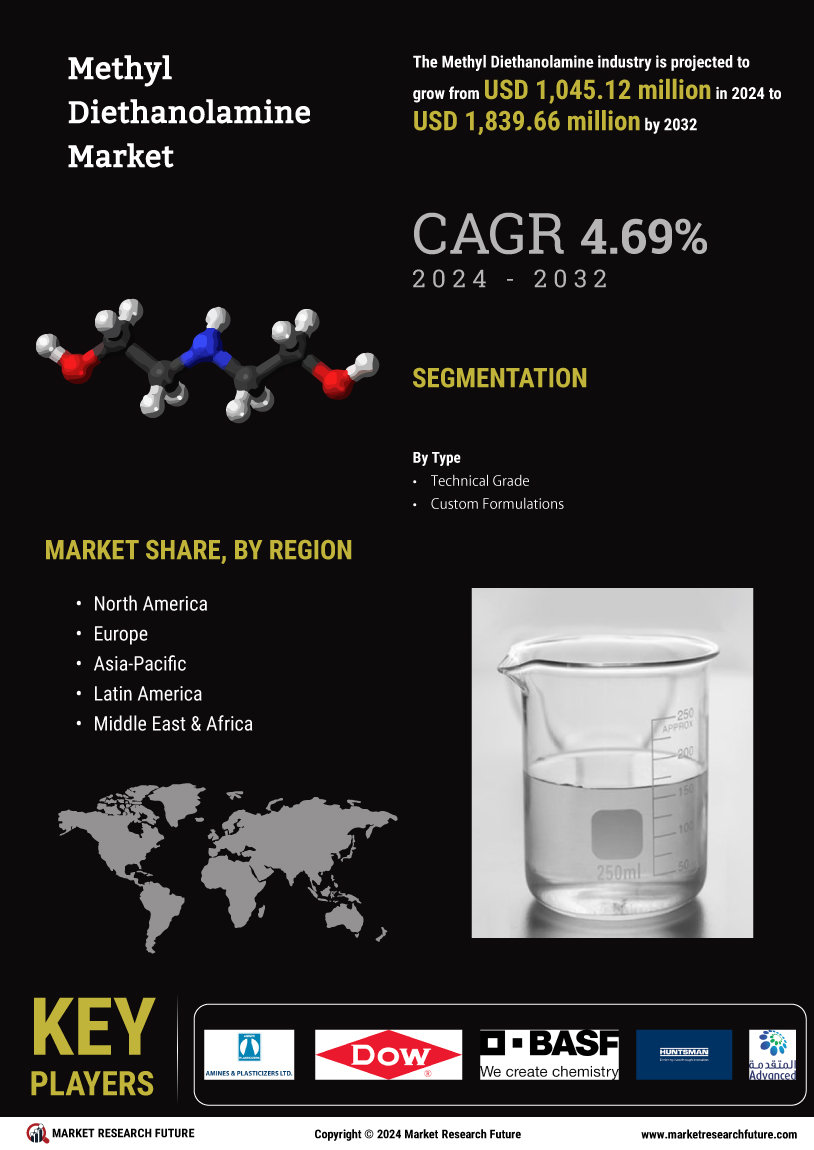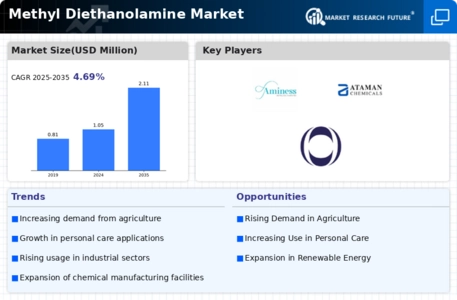The competitive landscape of the Methyl Diethanolamine market is influenced by several key players who offer products for various applications. Major market participants, including Amines & Plasticizers Ltd, Amines & Plasticizers Ltd, Dow, BASF SE, Huntsman International LLC, Advanced Petrochemicals Ltd., Sterling auxiliaries private limited, Ennore India Chemicals, Ataman Kimya, INEOS, Others , are dedicated to enhancing product capabilities to uphold their brand position. The Methyl Diethanolamine Market is extremely competitive, with players competing, partnering, and investing heavily in research and development to gain a significant market share.
The market is moderately fragmented with rising competition, increasing collaborative partnerships, and other strategic decisions to achieve operational efficiency.
Mergers and collaborations were also observed to expand the company's product portfolio, as well as introduce new products. The growth of prominent industry players is dependent on various factors, such as market conditions, government support, and industry development. Key manufacturers in the methyl diethanolamine market are focusing on Carbon Capture and Storage (CCS) and research and development for improved formulations. It is also projected that a rise in the investments for R&D will also boost the market's growth in the upcoming future.
Amines & Plasticizers Ltd: Amines & Plasticizers Ltd is India's first and largest producer of Ethanolamines, Alkyl Alkanolamines, Morpholine Derivatives such as NMMO 50%, and Gas Treating Solvents. APL has also expanded its operations to include the production of Specialty Ethoxylates and Propoxylates, Block Polymers and Co-Polymers of EO and PO in addition to Fatty Alcohol Ethoxylates and Propoxylates, PPG's (of various molecular weights such as 425, 900, 1020, 2000 & 4000), Cement Grinding Aids, TIPA 85%, DEIPA 85%, Phenoxyethanol of High Purity, and Oil Its corporate headquarters are in Mumbai, India, while its manufacturing facilities are in Navi Mumbai.
APL serves approximately 75-80% of the total demand in the Indian market for Ethanolamines and Alkyl Alkanolamines and regularly exports its products to over 50 countries worldwide, including the United States, Canada, Germany, New Zealand, South Korea, South East Asia, Japan, Australia, and the Middle East countries, among others.
Dow.: Dow Chemical Company (Dow) manufactures and supplies raw materials for a wide range of industries, including appliance, automobile, agricultural, chemical processing, electronics, oil and gas, and processed foods. Among its diverse portfolio are businesses in specialty chemicals, advanced materials, agrosciences, and plastics that provide a variety of technology-based goods and solutions. It belongs to the American Chemistry Council. Dow is a major producer of polystyrene, polyurethane, polyethylene, polypropylene, and synthetic rubber. It also produces a lot of ethylene oxide, acrylates, surfactants, and cellulose resins.
It manufactures agricultural chemicals such as the insecticide Lorsban as well as consumer goods such as Styrofoam.













